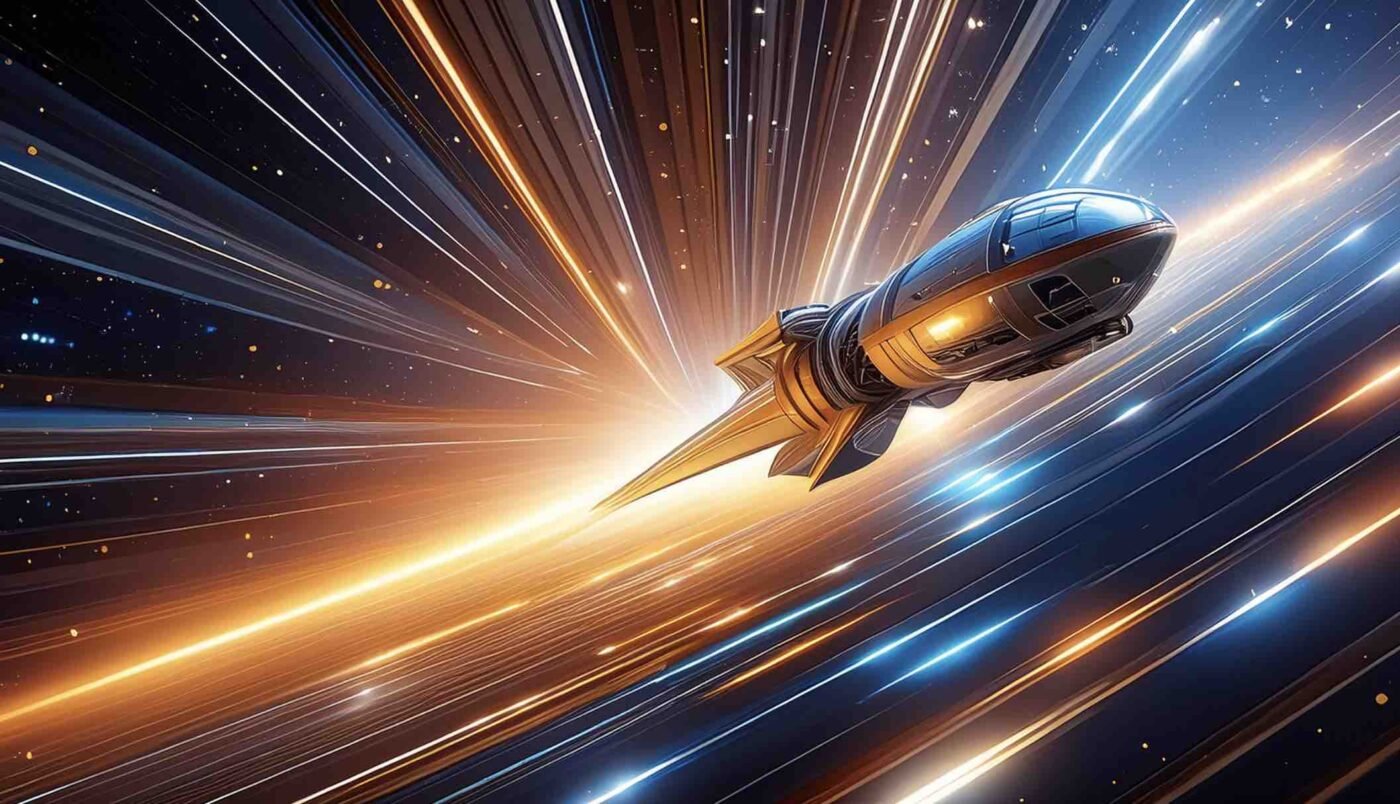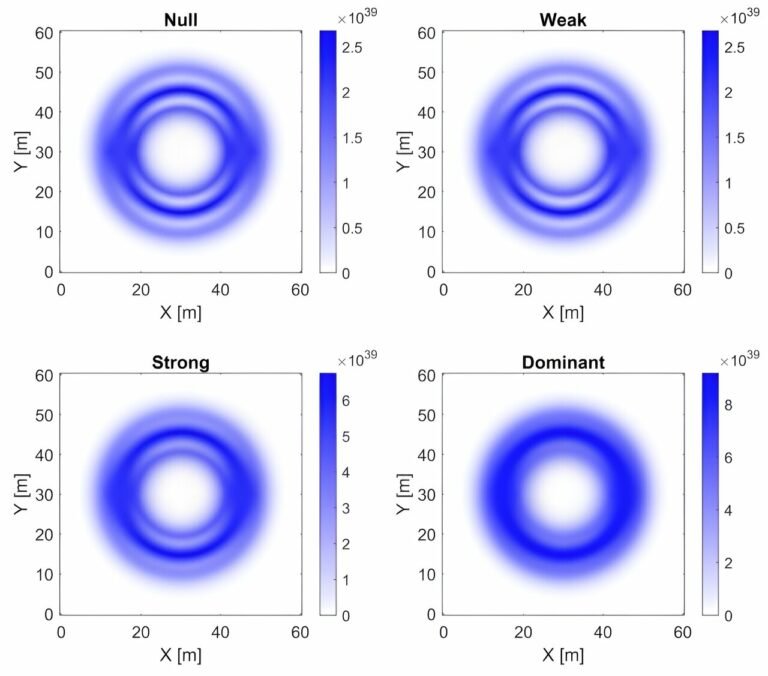
Posted on 05/15/2024 8:45:53 AM PDT by Red Badger

A novel warp drive concept that can function without any need for hypothesized exotic or negative forms of energy has been unveiled in a groundbreaking new study by leading propulsion researchers.
Dubbed the “Constant-Velocity Subluminal Warp Drive,” the concept, developed by physicists with the Advanced Propulsion Laboratory at the New York-based think tank Applied Physics and from the University of Alabama in Huntsville, offers a theoretical new means of propulsion for space travel that conforms to general relativity, allowing it to operate at constant subluminal speeds with no need for unphysical forms of matter outlined in past concepts.
According to their new research, the physicists propose integrating a stable shell of ordinary matter with the shift vector of a warp drive similar to the famous “Alcubierre drive” first proposed decades ago. This would allow a “warp bubble” to be achieved that will allow the movement of objects very rapidly through space within the bounds of light speed.
WARP SPEED AHEAD
In 1994, theoretical physicist Miguel Alcubierre initially proposed a warp drive concept in which faster-than-light travel could be effectively achieved by contracting space in front of a spacecraft and expanding it behind the vehicle, as opposed to propelling the craft through physical space using traditional means of propulsion. Under these circumstances, Alcubierre envisioned that a configurable energy-density field lower than vacuum could be generated, providing a means of space travel in alignment with Einstein’s field equations.
Three years ago, researchers with Applied Physics first reported that a warp drive requiring no exotic matter could be constructed, telling The Debrief that their design was constrained by Newtonian physics and that reports claiming it could exceed light speed were inaccurate.
“We show that a class of subluminal, spherically symmetric warp drive spacetimes, can be constructed based on the physical principles known to humanity today,” said Gianni Martire, the CEO and co-founder of Applied Physics, in a 2021 email to The Debrief.
In April, Applied Physics officially unveiled its Warp Factory analysis tool. In a statement provided to The Debrief, Dr. Christopher Helmerich, one of the co-authors of the new paper published in Classical and Quantum Gravity, said the toll “serves as a reality check for warp drive designs,” allowing researchers to analyze designs “in a comprehensive and automated manner” that allows the identification of unphysical characteristics with greater efficiency.
“This means we can steer the development of warp drive technology toward designs that can, hopefully, be built and operated in the future,” Helmerich told The Debrief in April.
Now, the team says its latest work represents a new milestone in the path toward making warp drive concepts a reality.
“This breakthrough represents the first numerical implementation of physical warp drives, made possible using the Warp Factory analysis tool developed at Applied Physics,” reads a statement on the think tank’s official website.
ALIGNING WITH THE ALCUBIERRE METRIC
In their new paper, the Applied Physics team presents what they characterize as “the first constant velocity subluminal physical warp drive solution to date that is fully consistent with the geodesic transport properties of the Alcubierre metric.” Significantly, the team’s theoretical warp drive concept can facilitate the geodesic transport of observers while satisfying several energy conditions outlined in their paper.

Above: Evaluation of energy conditions for the constant velocity Warp Shell: The direction of motion is along the +X axis, with the cross-section along the Z axis aligned at the bubble center. The minimum values observed across all reference frames are displayed. Positive values (blue) and zero values (white) are physically permissible, while negative values (red) indicate a violation. Units are in joules per cubic meter (J/m³) (Credit: Fuchs et al/DOI: 10.1088/1361-6382/ad26aa).
~~~~~~~~~~~~~~~~~~~~~~~~~~~~~~~~~~~~~~~~~~~~~~~~~~~~~~~~~~~~~~~~~~~~~~~~~~~~~~
“This solution was constructed from a stable shell of matter with a modified shift vector on its interior,” the team writes, which they say allowed the creation of a warp solution possessing positive ADM mass—a quantity that refers to the concept of mass as seen in faraway regions—noting that the Warp Factory toolkit was employed for analysis and construction of the shell.
“This exciting new result offers an important first step toward understanding what makes physical warp solutions,” the team writes, adding that the new warp drive solution they have produced “shows that a more generic constant velocity warp drive spacetime can be constructed that satisfies the energy conditions.”
Going forward, the team says they plan to explore further possibilities involving their novel solution, optimizing and improving their theoretical framework to ensure that all the physical conditions required are met. They will also focus on “the question of accelerating the drive efficiently without breaking physicality,” which represents a significant factor in current research involving prospective warp drive technologies.
While the concepts outlined in the team’s new paper pave the way toward making travel through space nearing light speed a reality, constructing such an engine is likely something that will only be feasible far in the future, as the present state of technology would not allow for such a device.
For now, the warp drive concept remains a fascinating reality only in the fictional universes of Star Trek, although some intriguing observations from over the decades could hint at the possibility that such capabilities might already exist, perhaps within the technological toolkit of other advanced civilizations whose capabilities far exceed those of humans. While such possibilities remain entirely speculative for now, the work being undertaken by Applied Physics is bringing those concepts closer to becoming a reality for humans that, one day, may be capable of carrying future crewed missions to the furthest reaches of the final frontier.
“Although this design requires significant energy, it demonstrates that warp effects can be achieved using conventional matter while adhering to known energy constraints,” the Applied Physics team says of the new warp drive solution on its website.
“Applied Physics continues to make progress as humanity embarks on the Warp Age.”
The team’s new paper by Jared Fuchs et al, entitled “Constant velocity physical warp drive solution,” was published last month in Classical and Quantum Gravity. An earlier preprint version of the paper can be read in its entirety on arXiv.org.
~~~~~~~~~~~~~~~~~~~~~~~~~~~~~~~~~~~~~~~~~~~~~~~~~~~~~~~~~~~~~~~~~~~~~~
Micah Hanks is the Editor-in-Chief and Co-Founder of The Debrief. He can be reached by email at micah@thedebrief.org. Follow his work at micahhanks.com and on X: @MicahHanks.
Thanks.
5.56mm
Premium only..................
Similar to the EM drive... IF this is the device I’m thinking of... they’ve already tested it in a hard vacuum and still got a positive test result.
They are pretty much at the “chuck it out an airlock and see if it flies” stage.
BTW... this would theoretically open up the entire solar system to us as even Pluto would be reachable in just a couple days...
As such, “it’s a big f***ing deal” as our pResident once opined...
There is at least one effort claiming 1G acceleration out of their propellentless device.
At 1G constant acceleration, Pluto is reachable in just over 17 days.
No dark matter/energy required. With already available power sources.
Start to open the box and suddenly barking erupts.
That’s what I would think also, but not my field, so I am not sure what the reality is, and perhaps even those involved are not certain either. Which means that it’s possible that if wrong, it might not be safe for the human body.
And that's where one-way mission cryo-sleep comes in.
I can see a 1G being achieved with a propellent, but sustaining & actually increasing in speed seems unlikely without a propellent.
To me it sounds like science fiction, but since it is not my field I may be missing something. In other words, I am not saying it is impossible, but rather if possible, how is it possible. It doesn't seem that space objects increase their acceleration rates.
We have been taught that space is a vacuum, meaning there is no air resistance or friction to slow down or speed up objects. Which we see with comets that seem to move at a constant speed and movement that they can be predicted as to when they will once again pass by us, which indicates that there is something that makes their movement controlled by some source, wouldn't it?
they thought she returned to china.
but news came out a year or so ago that she died and was buried in Huntsville Alabama. She was preceded by her husband who died about 2016.
Turning at incredible speeds would not be a problem
/////
sounds like what space alien spaceships can do according to reports.
“At 1G constant acceleration, Pluto is reachable in just over 17 days.”
The distance from Earth to Pluto varies. But let’s use the approximate average of 6 billion miles. It would take 11.5 days to travel half this distance with a constant 1G acceleration. Then, you would need to slow down at this rate for another 11.5 days. So, it would take roughly 23 days...
Unless you just want to flash right on by Pluto.
What a waste of money. I see no reason to go to the moon, search other planets with probes, or put up space telescopes. How about cutting spending to govt income minus 10%?
Transfer of momentum in a standard resonant cavity. By this method, hitting light speed is not possible... Since the elasticity of the transfer is never perfect... the imbalance is what causes the motor to move...
That is a highly simplified explanation and leaves a LOT out...
Test results right now have produced 1G of thrust in a vacuum in a lab demonstrator... If it scales up... more could be possible, but then the effects of prolonged >1G effect on human physiology come into the equation...
Even a two month trip to Pluto and two months back would be possible...
That opens up a LOT of territory and resources in the solar system. Even if we spend the next couple hundred years mining out the asteroid belt and Mars...
It’s not a straight drop to Star Trek, but it gets us to that next step up the ladder...
I punched the numbers in to a Google search... The particulars are obviously going to be different.
Considering we have folks on the ISS that are in microgravity environments for MONTHS... 2-3 months at 1G is a piece of cake...
Biologically speaking and at our current tech level.
Wait a minute, there is a motor involved? Is a motor not considered a propellant, even if it doesn't require some form of energy source to make it operate?
Electricity in -> change in momentum out... Energy is conserved...
So... yeah.
EV batteries seem to lose power here on earth at much higher low temperatures.
So, it still remains sounding like science fiction, to me.
Yet... weirdly enough... Even the batteries on the Voyagers are still working even though they are pretty close to being interstellar at this point...
Disclaimer: Opinions posted on Free Republic are those of the individual posters and do not necessarily represent the opinion of Free Republic or its management. All materials posted herein are protected by copyright law and the exemption for fair use of copyrighted works.